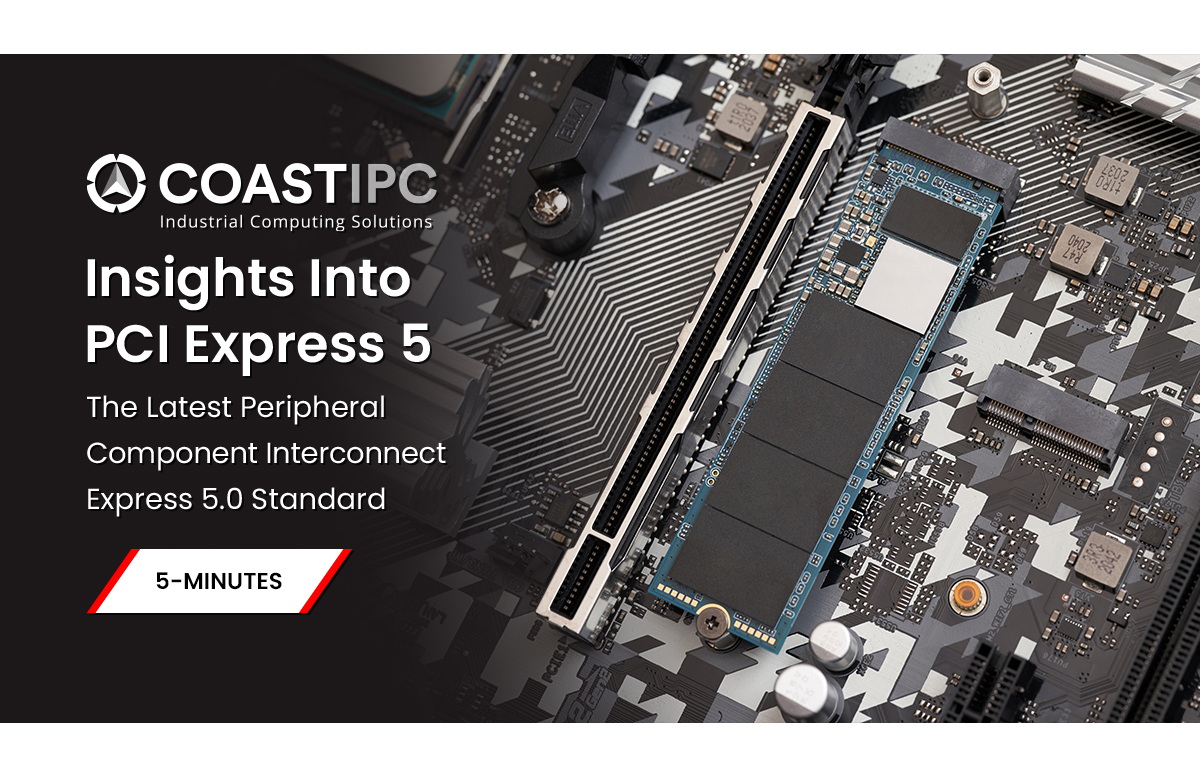
The PCIe communication protocol was released nearly 21 years ago and is undergoing another change. Adoption may be slower than with other changes because both devices communicating must have the same version to communicate at the highest rate. One class of device might wait for the other class to make the first move. Most often, a PCIe device, such as a network card, GPU, or storage drive will be connected to a PCIe slot on a receiving device such as a motherboard.
Although GPU computing is quite successful using PCIe 4.0 and may see little performance gains with PCIe 5.0, the greatest interest is likely to come from the opportunity to transfer large files to and from storage. With growing data needs and complex files generated by developments with AI and Inference, PCIe 5.0 is likely to grow as devices build in the new protocol.
The PCIe (Peripheral Component Interconnect Express) interface serves as a crucial link for integrating components such as GPUs, SSDs, and capture cards into computing devices. Recently, PCIe 5.0 has gained prominence on modern motherboards and SSDs, promising significant performance enhancements over its predecessor, PCIe 4.0. But what exactly sets PCIe 5.0 apart in terms of data transfer speeds, bandwidth, and frequency? Is upgrading from PCIe Gen 4 truly worthwhile for the average consumer? Unveiling the intricacies of PCI Express 5.0, here's a detailed overview of this cutting-edge expansion bus.
Understanding PCIe 5.0
PCIe 5.0, also known as Gen 5, represents a new standard that doubles the data transfer rate compared to PCIe 4.0. This advancement translates into improved performance across various PCIe peripherals, including SSDs and, to some extent, GPUs. Both AMD's AM5 and Intel's LGA 1700 motherboards offer varying degrees of support for PCIe 5.0.
While PCIe 5.0 SSDs have become increasingly prevalent since mid-2023, PCIe 5.0 GPUs are yet to make their debut. It's crucial to note that to leverage PCIe 5.0's capabilities, both ends of the connection must support it. Otherwise, if one component operates on PCIe 4.0 while the other on PCIe 5.0, the connection will default to PCIe 4.0 speeds.
Additionally, the term "PCIe 5.0 PSU" might raise eyebrows, considering that power supply units are unrelated to data transfer. However, PCIe 5.0 specifications encompass guidelines for devices utilizing it, including new ATX 3.0 PSUs and the 16-pin 12VHPWR cable. Essentially, the label indicates the presence of a native 16-pin connector rather than a necessity for powering PCIe 5.0 devices.
Gen 5 vs. PCIe Gen 4
PCIe Gen 4 currently stands as the prevalent standard supported by the majority of processors and motherboards. Despite its initial impressive performance, PCIe 4.0 is gradually reaching its limitations. For instance, most M.2 NVMe SSDs are restricted to four lanes, offering 8GB/s of constant data transfer. However, with PCIe 5.0, this rate doubles to 16GB/s, demonstrating a substantial leap in bandwidth.

As for whether upgrading to PCIe 5.0 components is advisable, practical performance matters more than theoretical capabilities. While PCIe 5.0 lays the groundwork for faster devices, it doesn't inherently enhance the performance of GPUs, which typically possess sufficient bandwidth. Conversely, the excitement surrounding PCIe 5.0 SSDs is warranted, as the increased bandwidth facilitates higher transfer speeds, particularly in handling large files.
Release Date
The PCI Express 5 standard was introduced in 2019, with PCIe 5.0-capable devices gradually entering the market, primarily in the SSD sector. However, the transition to PCIe 5.0 remains sluggish on the GPU front, with current top-tier graphics cards still reliant on PCIe 4.0. Although rumors hint at future Nvidia RTX 5000 series GPUs featuring PCIe 5.0 support, consumers must contend with the PCIe Gen 4 interface until their anticipated release in 2025.
Learn More
At CoastIPC, we live at the edge of industrial computing performance. Our experts are ready to discuss PCIe 5.0 or any other technology, old or new. Contact us anytime via email, phone, or chat. Sign up for our blog or follow us on LinkedIn to find out when PCIe 5.0 and other new technologies are available.
